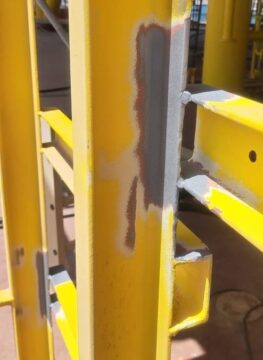Sandblasting, often called abrasive blasting, involves propelling fine particles at high speeds to clean, refine, or texture a surface. Think of it as a precision sandstorm, stripping away grime, paint, or corrosion with force. Though sand was the original abrasive, today’s methods use diverse materials tailored to specific tasks. From industrial giants to hobbyists, sandblasting is a trusted solution for surface transformation.
The Mechanics of Sandblasting
Sandblasting is both simple and sophisticated, relying on specialized tools and careful execution. Here’s how it comes together:
- Equipment: The core setup includes a compressor for power, a blasting gun to direct the flow, a container for abrasive media, and a nozzle for precision. Safety gear—like masks, goggles, and coveralls—is critical to shield against dust and debris.
- Abrasive Choices: Modern sandblasting uses a range of media, each suited to different surfaces and goals:
- Crushed glass for eco-friendly cleaning.
- Steel shot for tough metal surfaces.
- Plastic beads for delicate materials like fiberglass.
- Garnet for cutting through heavy coatings.
- Baking soda for gentle, non-abrasive jobs. The choice depends on whether you’re working with concrete, wood, or metal and whether you aim to clean, etch, or smooth.
- The Action: A compressor blasts the abrasive through the nozzle, striking the surface to remove unwanted layers or create patterns. The force and angle determine the intensity, from light cleaning to deep carving.
- Containment: The process generates clouds of dust, so small projects often use sealed blast cabinets, while larger jobs may require blast tents or rooms with robust ventilation.
Epoxy Paint: Varieties, Features, Applications, Benefits, and Drawbacks
Where Sandblasting Shines
Sandblasting’s adaptability makes it a cornerstone in countless fields. Here are some key applications:
- Heavy-Duty Cleaning: Erases rust, grease, or old coatings from industrial equipment, vehicles, or steel structures.
- Restoration Projects: Brings new life to antiques, classic cars, or weathered wood by gently removing years of buildup.
- Surface Prep: Roughens metal or masonry to ensure adhesives, paints, or sealants bond tightly.
- Creative Etching: Carves designs into stone, glass, or ceramics for custom art, signs, or architectural features.
- Construction: Strips formwork or exposes textured finishes on concrete for aesthetic appeal.
From rugged job sites to delicate studios, sandblasting handles it all with finesse.
Why Choose Sandblasting?
Sandblasting stands out for several reasons:
- Fast Results: It clears large surfaces or stubborn contaminants quicker than manual scrubbing or chemical methods.
- Customizable: Adjustable settings and media allow for pinpoint accuracy, whether you’re polishing jewelry or stripping a ship’s hull.
- Wide Reach: Works on nearly any hard material, from brick to aluminum, with tailored outcomes.
- Sustainable Options: Green abrasives like recycled glass or organic media minimize environmental harm.
Staying Safe
Sandblasting demands respect due to its hazards. Here’s how to stay protected:
- Lung Safety: Fine dust, especially from silica, can harm lungs. Use respirators and ensure good airflow or dust extraction.
- Physical Protection: High-speed particles can bruise or blind, so wear sturdy suits, gloves, and visors.
- Eco-Consciousness: Some media require careful disposal to avoid pollution. Opt for biodegradable or recyclable options when possible.
- Noise Control: The roar of compressors calls for earplugs to prevent hearing damage.
Following safety protocols, like those set by workplace regulators, is essential for pros and amateurs alike.
Sandblasting vs. Alternatives
How does sandblasting compare to other surface treatments? It depends on the task:
- Chemical Cleaners: Effective for complex shapes but slow, hazardous, and less eco-friendly.
- Manual Grinding: Precise for tiny areas but time-consuming and inconsistent on larger surfaces.
- Soda Blasting: Gentler for fragile materials but less effective against thick rust or paint.
Sandblasting often wins for its blend of speed, affordability, and flexibility.
Pro Tips for Sandblasting Success
Maximize your results with these insights:
- Pick the Right Grit: Match media to the job—soft for glass, coarse for steel.
- Start Small: Test on a scrap piece to fine-tune pressure and distance.
- Clean First: Remove oils or dirt to ensure even blasting.
- Check Gear: Inspect nozzles and hoses regularly to avoid clogs or leaks.
- Control Dust: Use enclosures or barriers to simplify cleanup and reduce mess.
The Horizon of Sandblasting
Sandblasting is evolving with technology. Innovations like vapor blasting, which mixes abrasives with water to cut dust, and automated systems for precision are gaining ground. Sustainable media and closed-loop recycling are also shaping a greener future for the craft.
Wrapping Up
Sandblasting is a blend of raw power and delicate control, turning tired surfaces into fresh canvases. Whether you’re prepping a factory floor, restoring a family heirloom, or carving a masterpiece, it’s a technique that delivers. With the right tools, media, and safety measures, anyone can tap into its potential.

